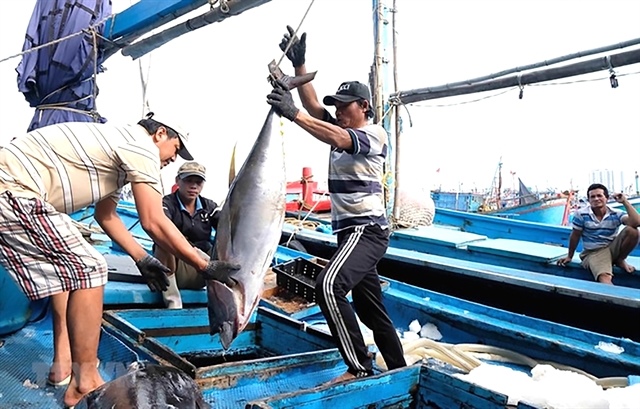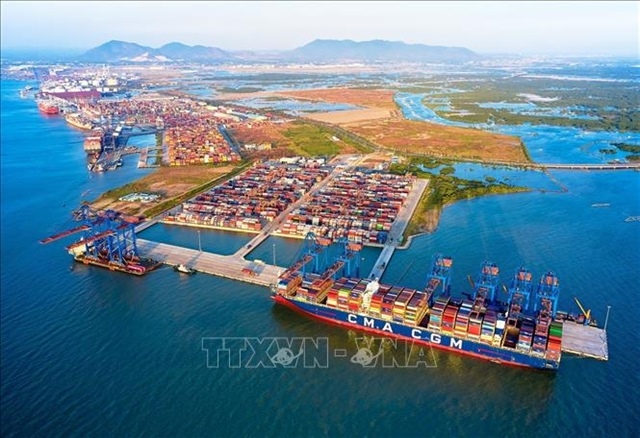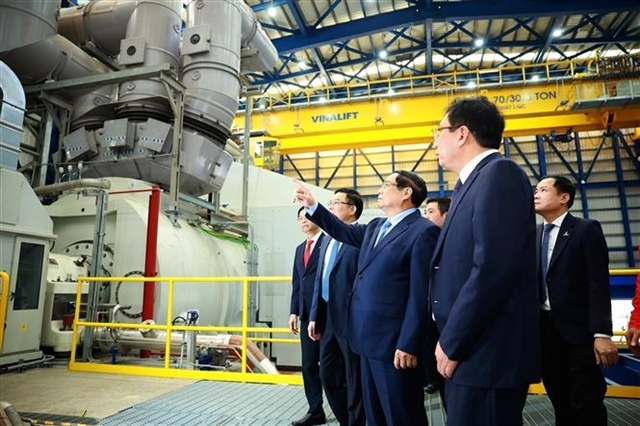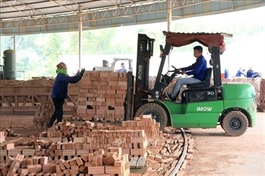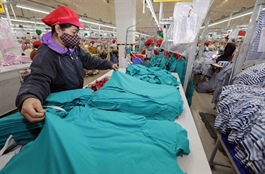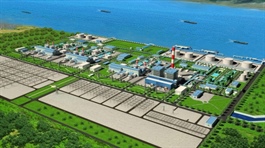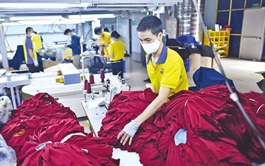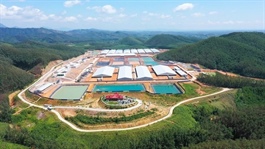Pathways outlined for green ambitions
Pathways outlined for green ambitions
Vietnam’s export-oriented growth model is being undermined by high-carbon density production amid global rising demand for green products with barriers applied.
The World Bank in late May released a report titled ‘Vietnam 2045 - Growing Greener: Pathways to a Resilient and Sustainable Future’, underlining that high-carbon intensity of production has been posing risks to Vietnam’s competitiveness and export-oriented growth model.
Figures from the World Bank showed that Vietnam’s net export-related CO2 emissions have been historically higher than comparators since the early 2000s and continued to rise to 36 per cent of production by 2021. In 2024, more than half of all exports or $225 billion went to key markets of the Organisation for Economic Co-operation and Development (OECD).
|
However, today more than 90 per cent of global GDP is generated in countries that have been committed to achieving net-zero emissions in coming decades, changing their import demands.
The EU plans to implement its Carbon Border Adjustment Mechanism (CBAM), which will tax imports of five carbon intensive products including aluminium, cement, electricity, fertilisers, and iron and steel based upon carbon intensity of production.
“While these products account for less than 4 per cent of Vietnam’s exports to the EU, plans to expand the mechanism to further products could have greater impacts,” the World Bank stated, adding that the scope of the CBAM could potentially be expanded in the coming years to include a broader range of sectors and emissions, reinforcing its role in promoting global decarbonisation and ensuring a level playing field for industries.
Currently steel is one of the biggest carbon emitters in Vietnam. It is estimated that the steel sector will emit about 122.5 million tonnes of CO2 by late 2025 from an estimated 120 million in 2023, and 132.9 million by 2030, holding about 17 per cent of the country’s total emissions.
Figures from the Vietnam Customs indicated that last year, Vietnam exported over 2.9 million tonnes of assorted steel products to the EU, accounting for 23 per cent of the country’s total export volume.
Besides that, multinational corporations (MNCs) are increasingly adopting commitments to reduce greenhouse gas emissions along their value chains. World Bank analysis estimated that two-thirds of MNCs headquartered in high-income countries have net-zero or other stringent climate commitments for their operations. There is also growing pressure on MNCs to measure, disclose, and lower their environmental impacts.
For example, the EU’s Corporate Sustainability Due Diligence Directive (CS3D) will oblige companies to disclose environmental footprints and demonstrate actions taken to protect the environment. Around 70 per cent of Vietnam’s export value is from MNCs operating in or sourcing from the country.
Dzeneta Mulabegovic, private sector engagement specialist at the United Nations Development Programme, said that the CS3D, the implementation of which will follow 2027 onwards, requires in-scope companies to work closely with suppliers and stakeholders to identify and mitigate potential risks throughout their chain of activities.
“The companies are legally mandated to deploy comprehensive due diligence policies that address these risks, monitor implementation, and do what they can to remediate possible negative impacts,” Mulabegovic said. “A highly debated game changer is that the CS3D also regulates civil liability of companies for social or environmental violations in their supply chains, and enables persons affected by such violations to seek compensation in civil proceedings.”
The World Bank stressed that Vietnam’s industries could face “reduced market access and lower demand if they fail to transition to greener practices, making it crucial to align domestic decarbonisation efforts with global market trends to safeguard export opportunities and maintain growth”.
According to the bank, in the absence of mitigation measures reducing Vietnam’s export carbon intensity, there is a risk of OECD-based MNCs dropping Vietnam as a supplier with potential sizeable impacts.
Under a hypothetical 30 per cent fall in exports to OECD countries, Vietnam’s GDP would be around 6 per cent lower than in a no-impact reference scenario by 2030. With around 70 per cent of Vietnam’s exports by MNCs and two-thirds of OECD MNCs having stringent climate commitments, this scenario is not implausible. Yet, it does reflect a likely worst-case outcome.
“While manufacturing and agriculture would account for the largest losses, falling by 3 and 0.8 per cent of total GDP, respectively, these impacts would be broad-based and affect a large number of sectors through upstream and downstream linkages,” the World Bank said. “Loss of employment would also be high at almost 3 per cent of total jobs, dominated by lower skilled manufacturing and agricultural positions.”
In the first five months of 2025, Vietnam’s total trade was estimated to have stood at $355.79 billion, an on-year rise of 15.7 per cent. Export and import turnover sat at $180.23 billion and $175.56 billion, up 14 and 17.5 per cent, respectively.
- 09:34 11/06/2025




